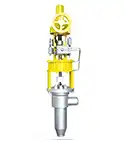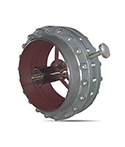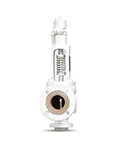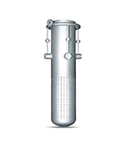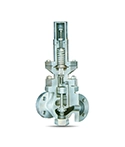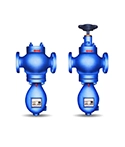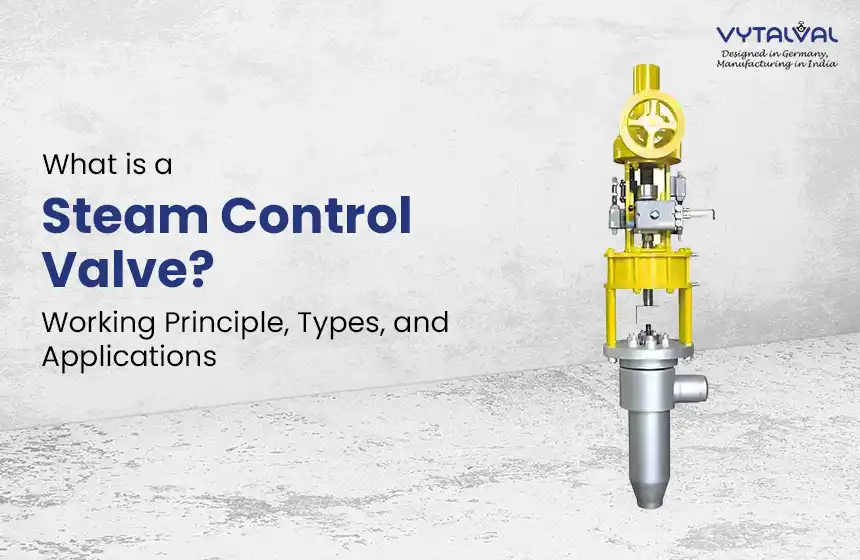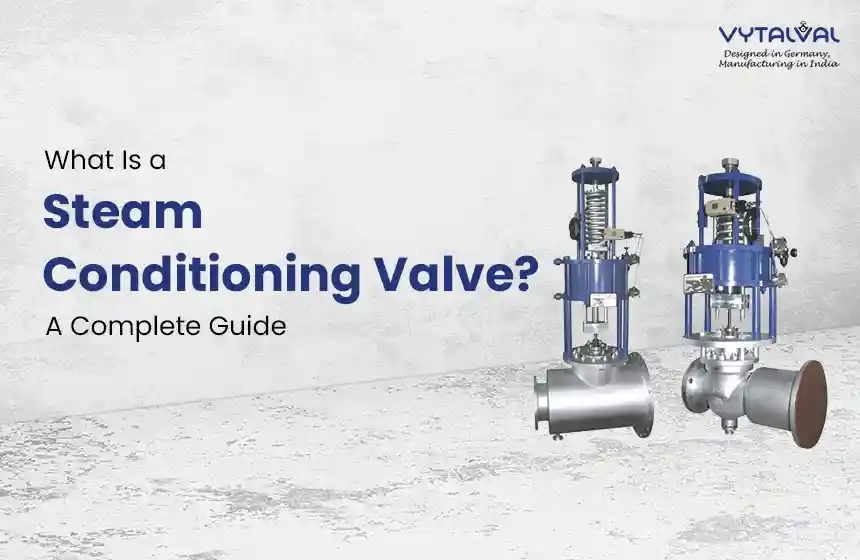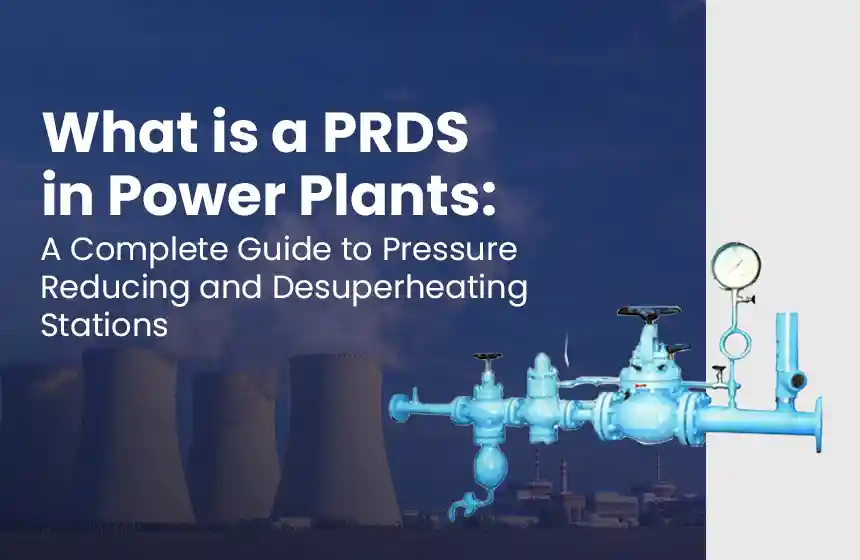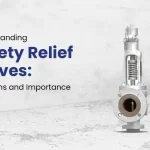
Understanding Safety Relief Valves: Functions and Importance
July 9, 2025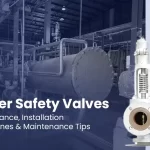
Boiler Safety Valves: Importance, Installation Guidelines & Maintenance Tips
August 1, 2025
Understanding Safety Relief Valves: Functions and Importance
July 9, 2025
Boiler Safety Valves: Importance, Installation Guidelines & Maintenance Tips
August 1, 2025What is a control valve? What factors to be considered while selecting a control valve
The control valve is the heart of every process plant. It is a quiet performer that keeps everything running smoothly. Whether it is managing water flow in the treatment plant, regulating steam in the power plant, or handling cohesive chemicals in a refinery, control valves are crucial for process control. Although control valves are a critical component, they are usually overlooked until something goes wrong.
In this blog, we’ll explain what a control valve is, how it works, and the main factors to consider when choosing one from trusted Control Valve Manufacturers in India. Let’s explore it step by step.
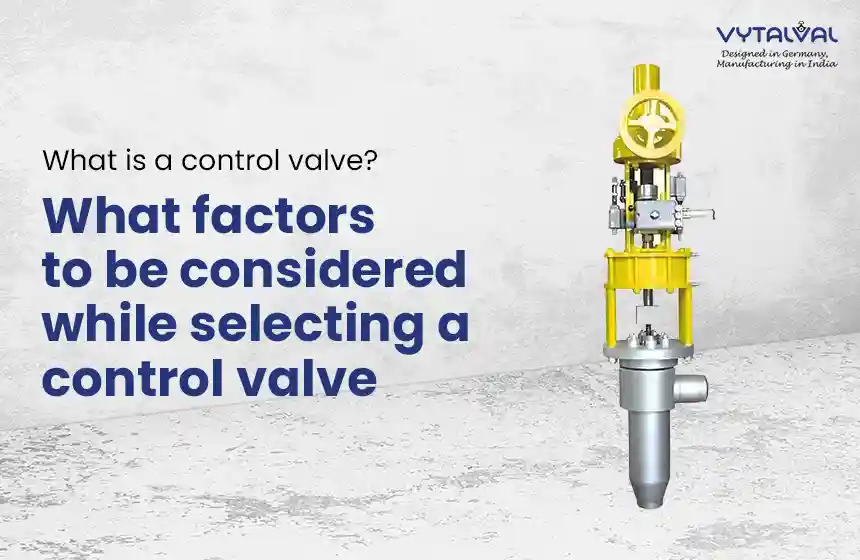
What is a Control Valve?
A control valve is a device used to regulate the flow, pressure, or temperature of a fluid in a pipeline. This fluid can be water, gas, steam, or oil. A control valve adjusts the flow of fluid according to the signal from a controller. This controller monitors conditions such as temperature, pressure, flow rate, etc.
The control valve consists of various parts.
1. Valve body – It is the part where fluid flows.
2. Actuator – This part moves the valve open or closed.
3. Positioner – It ensures the valve opens to the correct position.
4. Controller – This part sends the signal based on the system's needs.
When all these parts work in coordination, it keeps the process within the desired limits. For example, if the pressure is too much, the valve partially closes. If the flow is too little, the valve opens wider. All these processes occur automatically.
How does a Control Valve Work?
Let's understand how a control valve works with a simple example. Suppose you have a pipeline which carries the steam to heat the chemical reactor. You want the reactor to stay at a specific temperature. A sensor detects the temperature and sends the signal to the controller. If the temperature drops, the controller instructs the control valve to open more, allowing more steam to enter. If it gets too hot, the valve closes a bit. So, this system keeps the process balanced.
There are two major types of valve operation.
1. On-Off Control Valve – Keeps the control valve either fully open or fully closed.
2. Modulating Control Valve – It adjusts the flow in varying degrees based on demand.
Now that you understand what a control valve is and what it does, let's look at how to choose the right one.
What Factors Do You Need to Consider While Selecting a Control Valve?
When selecting the control valve, you must consider various factors. If you choose the wrong control valve, you've to deal with poor performance, leakage, frequent breakdowns, and safety risks. Here are a few key factors that you need to consider.
1. Fluid Type
The fluid that flows through the valve could be water, gas, oil, chemicals, or steam. Each fluid behaves differently. So, before choosing the valve, ask yourself the following questions.
- Is it corrosive or toxic?
- Does it contain solids or slurry?
- Is the fluid temperature or pressure high?
If your system deals with corrosive or abrasive materials, you need severe service control valves. These valves are specially built that withstand extreme conditions and prevent wear and tear.
2. Flow Rate and Pressure
It is essential to understand the minimum and maximum flow rates, as well as the inlet and outlet pressures. Do you know why? It is because these valves are designed to handle specific ranges. If the pressure is too high, a standard valve might not survive. Here is where severe service control valves can be helpful. They are engineered to perform under such extreme conditions without breaking down.
3. Valve Size and Type
Control valves come in various sizes and types, each with its own advantages.
- Globe valve – It offers precise control.
- Butterfly valve – They are lighter and cost-effective for larger diameters
- Ball valve – Ball valves are great for quick shut-off.
- Diaphragm valve – This valve type is perfect for corrosive or abrasive fluids like those found in mining operations.
- Plug valve – They are often used in high-pressure applications like oil and gas pipelines.
If you choose a valve which is small in size, it won't allow passage for the flow of liquid or gas via the pipeline. In case you select an oversized valve, it could also be a problem. You have to deal with friction problems for oversized valves. Therefore, choose the valve size properly.
You must match the valve type and size to your process needs. Do not choose a valve because it is cheap or easily available.
4. Actuator Type
It is an important factor that you should consider, as it helps you decide how the valve will be powered. If the valve is manually operated, then there is no issue. However, if you require an actuator, choose the one which suits your environment. There are three different types of actuators.
1. Pneumatic actuators They are fast and reliable.
2. Electric actuators Electric actuators are clean and precise.
3. Hydraulic actuators Hydraulic actuators are strong for heavy-duty tasks.
For example, if you are operating in explosive zones, electric actuators may not be safe unless they're explosion-proof.
5. Control Signal Compatibility
Ensure the control valve you choose is compatible with your control system. If the valve is compatible, you will get seamless communication between the controller and the valve.
6. Temperature Range
If your system deals with extreme temperatures, the control valve you choose must withstand those conditions. So, choose the one that best fits the temperature requirement.
7. Performance Capacity
It is another important factor that you must consider while selecting the control valve. Ensure how much pressure a valve can handle and what it is expected to perform. For example, a metal valve is perfect if your operations are conducted in higher temperatures. On the other hand, a plastic valve is the ideal choice when the requirements are not extreme.
8. Severe Service Requirements
There are some systems/applications which require high velocity, flashing, cavitation, or corrosive chemicals. These are severe service conditions which require specialized solutions.
Here is where severe service control valves shine. Control valve manufacturers like Vytal Control design such valves with reinforced materials, advanced designs, and longer lifespans. They reduce downtime, avoid frequent maintenance, and ensure safety.
9. Maintenance and Availability
The best valve requires occasional maintenance. So, choose control valve manufacturers that offer service support, spare parts availability, and customization if needed.
When selecting a valve, buy from the best control valve manufacturers in India. It can offer cost benefits, on-ground support, and quicker delivery.
Concluding Remarks: Selecting the Right Control Valve Manufacturers Matters!
The control valve may seem like a small part of your plant, but its role is important. It helps improve safety and optimize performance. However, choosing the right control valve can save money, reduce downtime, and improve efficiency. When you need to deal with tough conditions, invest in severe service control valves that can handle pressure. So, whether you're in the oil industry or managing the water treatment plant, you need reliable control valve manufacturers.
If you're looking for a trusted control valve manufacturer in India, Vytal Control is the ideal one. They understand both engineering and your industry's unique challenges. They offer customized solutions, including severe service control valves that meet the most demanding industrial needs. So, choose Vytal Control if you're searching for performance, reliabilty, and expert support.
FAQs
1. What is a control valve?
A control valve is a device used to control the flow of a fluid—like water, gas, steam, or oil—in a system. It works by opening, closing, or partially blocking the flow based on signals it receives from a controller. The main purpose of a control valve is to maintain the right flow rate, pressure, or temperature in a pipeline or process. These valves are widely used in industries such as oil & gas, power plants, chemical processing, and water treatment to ensure smooth, safe, and efficient operation.
2. How does a control valve work?
A control valve controls the flow of fluid—like water, steam, gas, or oil—in a pipeline. It works by opening or closing to allow more or less fluid to pass through, based on the system’s needs.
The valve is operated by an actuator, which receives signals from a controller. For example, if the system needs more pressure or flow, the controller tells the valve to open more. If it needs less, the valve closes slightly. This helps maintain the right flow, pressure, or temperature in the system.
In simple terms, a control valve automatically adjusts how much fluid flows through a system to keep everything working safely and efficiently.
3. What Materials Are Used in Control Valves?
Control valves are made using different materials based on what kind of fluid they handle and how hot or pressurized it is.
- The valve body is usually made from cast iron, carbon steel, or stainless steel.
- Stainless steel is good for chemicals and rust protection.
- Carbon steel is strong and used for high pressure or temperature.
- Cast iron is used for simple, low-pressure jobs.
- The internal parts (called trim) are often made from stainless steel or special metals like Monel or Hastelloy if the fluid is very harsh.
- The seals and seats (parts that stop leaks) are made from materials like Teflon (PTFE), Viton, or rubber, depending on the fluid type and temperature.
Using the right materials helps the valve work better, last longer, and stay safe.
4. Why is selecting the right control valve important?
Choosing the right control valve is very important because it helps your system run smoothly, safely, and efficiently. A properly selected valve controls the flow, pressure, and temperature of the fluid accurately, which keeps the process stable. It also helps reduce energy waste, prevents leaks, and lowers the chances of breakdowns or accidents. On the other hand, using the wrong valve can lead to poor performance, frequent maintenance, high costs, and safety risks. That’s why it's important to select the right valve based on the type of fluid, operating pressure, temperature, and specific application needs.
5. What are the main factors to consider when selecting a control valve?
Choosing the right control valve is important to keep your system working safely, efficiently, and for a long time. Here are the key things you should look at:
Type of Fluid
Find out what kind of fluid will pass through the valve—water, gas, steam, oil, or chemicals. Some fluids can be corrosive or dirty, so the valve must be made from suitable materials.
Flow Rate
The valve must control how much fluid flows through the system. Choosing the right size helps maintain proper flow and pressure.
Pressure and Temperature
Know the pressure and temperature in your system. The valve should be strong enough to handle these without leaking or breaking.
Valve Type
There are different valve types like globe, ball, butterfly, and others. Each works best for certain applications. Choose one based on how you want to control the flow.
How It Operates (Actuator)
Decide how the valve will open and close—manually, or automatically using air (pneumatic), electricity (electric), or fluid (hydraulic).
Valve Material
The material of the valve (like stainless steel, bronze, or plastic) should match the fluid type. This prevents damage and increases the life of the valve.
Leakage and Shut-off Requirements
Some systems need a tight shut-off with zero leaks. If that’s important in your process, choose a valve with high shut-off performance.
Accuracy and Speed
If you need very precise control or fast response, make sure the valve and actuator can meet those requirements.


